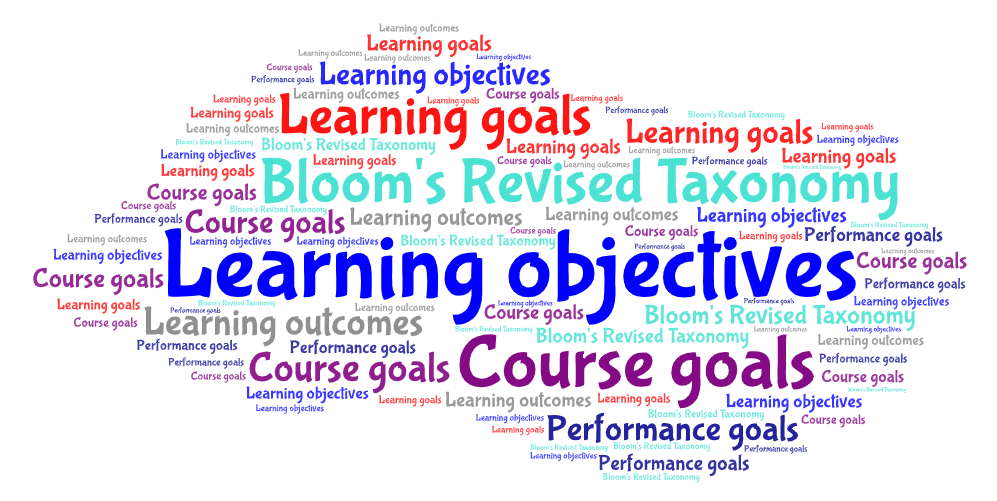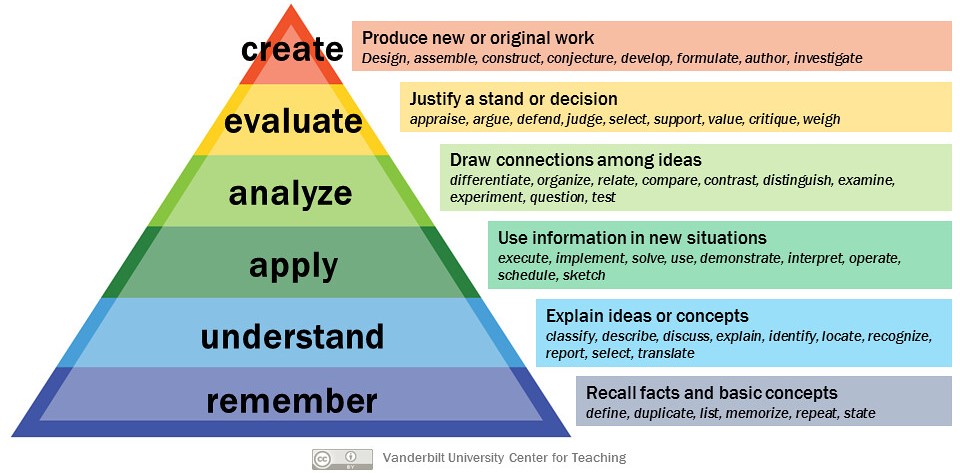What is in a name?
I had a discussion with two fellow instructional designers/facilitators recently about terminology. Should we be using the word learning objective (my preference), learning outcome or are we talking about course goals? And is there even a difference? Not to forget the word performance goal!A quick search online and in a handful of instructional design books shows that learning outcomes and learning objectives are often used interchangeably. I only found Oakland University making a clear difference between learning objectives and outcomes. They argue that objectives are intended and lay out how goals are going to be met, while outcomes are what is achieved.
Piskurich (Rapid Instructional Design, p. 130) argues that: “Course goals are statements developed to explain what the course will cover.” The focus is on the expectations of the organisation and course goals are written from the course’s perspective and less important than objectives. Objectives, Piskurich argues, “ … give the trainees a clear understanding of what they will be covering in the course and what they will be expected to know or do when the course is completed.” The objectives are written from a learner’s perspective (Rapid Instructional Design, p. 128-130).
The Derek Bok Centre for Teaching and Learning at Harvard University takes a different stand on goals and objectives: “..goals generally refer to the higher-order ambitions you have for your students, while objectives are the specific, measurable competencies which you would assess in order to decide whether your goals had been met.
How: The 4 basics
When you ask 10 people to write learning objectives for a course, you probably get 10 different versions. It’s not easy to write comprehensive learning objectives. By following these 4 basic tips you will make a good attempt.
I would recommend you should start with using Bloom’s Revised Taxonomy. The taxonomy distinguishes different levels of thinking or skills and provides verbs that you can use in your learning objectives. There are taxonomies for cognitive, psychomotor and affective skills.
Realise that there is not just one learning objective for your course. You can write learning objectives at different levels. Level 1 is the overarching learning objective, while level 2 (and further) will describe the learning objectives in more detail. So, when you have divided your course in chunks, try to write at least one learning objective for each chunk.
Use Piskurich’ framework
I like this framework for writing learning objectives as it’s simple and ensures you’ve included all the required elements. Do realise that it’s not a very attractive way to inform learners about the course, so you might need to re-write them to be more learner centred. It looks like this:
When – the learner should be able to – behaviour (choose one of Bloom’s verbs) – criteria (what can you measure) – condition (the environment in which the behaviour will be performed).
Write smart objectives
To be able to evaluate a course at a later stage and measure success, you need SMART learning objectives. Try to write objectives that are specific, measurable, achievable, relevant and time-bound. You might struggle sometimes to quantify results, but it’s good to think about the objectives and find a way to define what success would look like..
Who cares?
The question is: who are we writing these learning objectives for? For the instructional designer or for the learner?
Some instructional designers argue that you shouldn’t include learning objectives at the start of the course. I agree with Julie Dirksen (Design for how people learn, p. 71) that it’s boring to show the objectives in the Piskurich’ format at the start of every course (I admit, I have done it too). But I don’t see any harm in re-writing and sharing the learning objectives in a way that shows the learner ‘What’s in it for me?’ (WIIFM). You could change them into questions: Would you like to …? When I enrol in a course, I want to know what I can learn too.
In 2006, Will Thalheimer came up with a new taxonomy with 4 types of learning objectives. In his article he describes the focusing objective and performance objective for the learner, and an instructional design and instructional evaluation objective for the designer. This will help the instructional designer to write learner-centred objectives to motivate, grab their attention and provide the necessary WIIFM at the start of the course. The instructional designer can use their own objectives focused on their design and evaluation.


